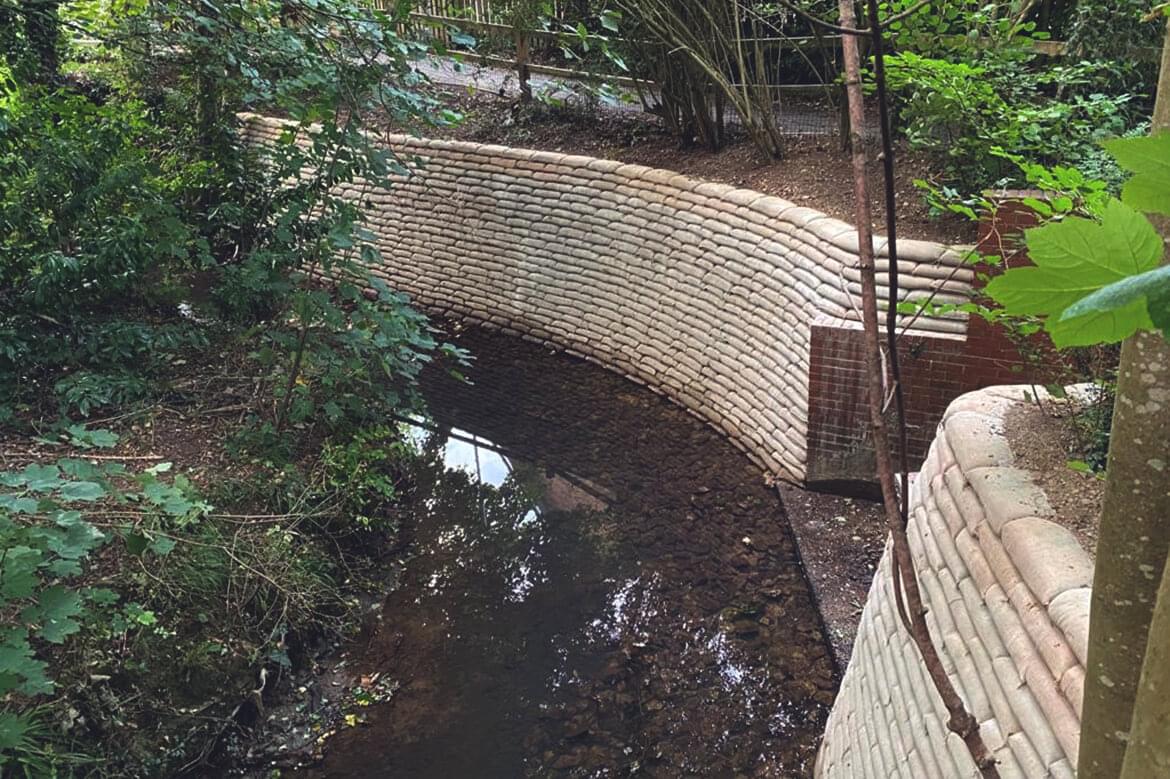Bulkhead on Lake Livingston and Its Role in Flood Defense Systems
Exploring the Different Uses Bulkhead Structures in Modern Style
Bulkhead frameworks play a significant function in modern-day style, offering both practical and aesthetic objectives. They can specify rooms, improve storage space remedies, and enhance lights. In industrial settings, they serve as prime focus that show brand name identification - Bulkhead on Lake Livingston. Additionally, their assimilation commonly supports audio administration and lasting techniques. Recognizing the full scope of their applications exposes much concerning modern layout patterns and user experience. What innovative uses bulkheads might emerge in the future?
Defining Bulkhead Structures
Bulkhead structures play a vital function in modern-day architecture, serving as essential components in different building styles. These structures are typically specified as elevated ceilings or systems, usually utilized to conceal mechanical systems, wiring, or pipes. Bulkheads can be discovered in both residential and commercial settings, where they offer a seamless mix of performance and aesthetics. Their design can incorporate lights fixtures and other decorative aspects, enhancing the total visual charm of a space.
Commonly built from products such as drywall, steel, or wood, bulkheads can be tailored to fit the architectural design and needs of the building (Bulkhead on Lake Livingston). They offer not only to hide unsightly framework yet additionally to produce specified areas within open rooms. By managing the flow of a room, bulkheads add to the spatial organization, making them a significant facet of contemporary architectural method. Consequently, their definition encapsulates both aesthetic and useful measurements
Functional Applications in Residential Layout
Bulkhead frameworks play an essential function in household style by facilitating space optimization techniques that optimize usable areas. They add aesthetic design elements that improve the aesthetic allure of living rooms. Additionally, these frameworks provide crucial architectural support options, making sure the honesty and safety of the home.
Space Optimization Methods
As contemporary domestic layouts increasingly focus on effective use area, cutting-edge methods emerge to optimize performance without compromising aesthetics. One prominent approach involves the assimilation of bulkhead structures, which can define locations while supplying vital storage space remedies. These structures can be utilized to develop vertical storage units that enhance both company and accessibility. In addition, multi-functional furniture, such as collapsible tables and exchangeable sofas, complements bulkhead layouts, enabling spaces to adjust to varying needs. Open layout additionally enhance spatial circulation, motivating versatility in use. Including built-in shelving and recessed illumination within bulkheads likewise adds to a streamlined atmosphere, making sure that every square inch of area is utilized successfully and harmoniously within the overall design.
Visual Style Components

Structural Assistance Solutions
In contemporary property design, an effective structural support service is important for preserving the honesty of rooms while maximizing layout and capability. Bulkhead structures play a substantial duty in this scenario, functioning as both support and dividing aspects. They can hide mechanical systems, such as pipes and electric circuitry, while supplying support to the ceiling and floor systems. By tactically positioning bulkheads, designers can develop defined locations within open layout, enhancing functionality without endangering structural security. Additionally, these frameworks can accommodate lighting fixtures, adding to both visual appeals and functionality. To summarize, bulkhead frameworks are essential in household style, using flexible assistance solutions that enhance both the performance and aesthetic appeal of living areas.
Enhancing Appearances in Business Rooms
When business rooms welcome ingenious bulkhead structures, they not only specify physical borders however likewise considerably boost the overall visual appeals of the setting. These architectural aspects work as visual focal points, attracting attention and developing a feeling of intrigue. By including varied materials such as glass, steel, or wood, bulkheads can mirror a brand name's identification and mission, adding to a natural design.
Moreover, the strategic placement of bulkheads can control light and darkness, adding depth and dimension to otherwise level areas. This interplay can transform an industrial area right into a welcoming environment, encouraging consumer engagement. Additionally, the usage of color and texture in bulkhead layout can stimulate details feelings, enhancing the general client experience. Inevitably, the thoughtful integration of bulkhead structures boosts the aesthetic charm of commercial spaces, making them not only practical yet additionally visually enchanting, consequently promoting a lasting perception on site visitors.
Acoustic Efficiency and Noise Monitoring
Effective acoustic efficiency plays a crucial role in modern style, especially within business rooms where sound management is vital. Bulkhead structures can considerably boost acoustic qualities by taking in noise, reducing echo, and mitigating noise transfer in between locations. These features are particularly advantageous in atmospheres such as dining establishments, workplaces, and movie theaters, where clear interaction and an enjoyable auditory experience are paramount.
The critical positioning and style of bulkheads can help create sound-buffer areas, successfully isolating noisy locations from quieter ones. Products used in bulkhead construction, such as acoustic panels and soft surfaces, contribute to their sound-dampening capabilities. Additionally, the consolidation of bulkheads permits for the combination of sound-absorbing components without compromising visual charm. By dealing with acoustic performance, designers can produce harmonious settings that improve comfort, boost individual experience, and promote efficiency, making bulkheads a crucial part in the design of modern industrial spaces.
Incorporating Bulkheads for Effective Room Use
Although usually ignored, the integration of bulkheads in building design can substantially boost area usage in contemporary structures. These structural aspects serve several functional purposes, supplying a means to conceal mechanical systems, electrical wiring, and plumbing without compromising looks. By purposefully placing bulkheads, designers can create specified locations within open floor strategies, thereby assisting in far better company and circulation.
Bulkheads can integrate storage space solutions and illumination attributes, taking full advantage of the performance of otherwise squandered vertical room. In domestic settings, they may define areas such as cooking areas or living locations, while in industrial rooms, they can enhance the effectiveness of designs by plainly noting pathways and workspace.
Ultimately, the thoughtful assimilation of bulkheads contributes to an extra aesthetically attractive and orderly atmosphere, enabling adaptable spaces that can progress with the needs of their passengers. This technique not only optimizes area but likewise fosters a much more harmonious interaction in between form and function.
Bulkheads in Public Style

Building Visual Enhancements
While lots of architectural aspects aim for performance, bulkheads in public style serve a dual purpose by enhancing visual allure. These frameworks commonly create visual passion via their design, integrating perfectly with surrounding aspects. By employing numerous products, structures, and shades, bulkheads can add to a special identification for public spaces, such as flight terminals, museums, and collections. Their tactical positioning assists to delineate locations, guiding site visitors while adding depth to the total style. Additionally, bulkheads can emphasize illumination, producing dynamic this atmospheres that alter throughout the day. This visual enhancement not only boosts the visitor experience yet likewise promotes a local color, making bulkheads an important factor to consider in contemporary public architecture. Overall, bulkheads personify the fusion of kind and feature.

Structural Support Solutions
As architects look for ingenious ways to enhance the architectural stability of public areas, bulkheads become vital parts in the design and construction procedure. These structures supply crucial support, especially in locations subject to heavy foot traffic or dynamic tons. By dispersing weight equally, bulkheads aid prevent architectural failing while allowing for functional design options. In big venues, such as arenas and convention facilities, bulkheads are often incorporated right into the total building structure, making sure stability and security. Furthermore, they can promote the consolidation of energies and mechanical systems, adding to the efficiency of area use. Ultimately, bulkheads stand for a critical service in modern public style, strengthening both performance and protection in community-focused environments.
Environmental Management Measures
Integrating ecological security actions into public style has come to be significantly essential as urban designers focus on sustainability alongside architectural support. Bulkhead frameworks serve a dual purpose hereof, acting as barriers versus disintegration and flooding while all at once enhancing the visual allure of city landscapes. Their layout usually includes natural environments such as plant life, which can improve air quality and provide environments for wildlife. Additionally, bulkheads can be engineered with permeable products that permit water absorption, reducing runoff and advertising groundwater recharge. This assimilation of environmental considerations not only preserves the atmosphere but likewise promotes community strength versus environment adjustment. By using bulkheads successfully, engineers add to sustainable urban development that lines up with contemporary ecological goals.
Future Patterns in Bulkhead Style
Emerging trends in best site bulkhead design reflect an expanding emphasis on sustainability, advancement, and performance in modern design. Developers are progressively including environmentally friendly materials, such as recycled compounds and bioplastics, to lower environmental effect. On top of that, the assimilation of smart technology is coming to be widespread, allowing bulkheads to offer multi-functional functions, including energy storage space and environment control.
In metropolitan settings, modular bulkhead systems are acquiring grip, supplying adaptability in style and convenience of installation. These systems can be adapted to numerous landscapes, permitting effective space use. In addition, visual considerations are advancing; bulkheads are currently being developed to boost visual charm, commonly including creative aspects that resonate with neighborhood society.
As environment resilience ends up being a priority, future bulkhead designs will likely focus on flood defense and stormwater administration, guaranteeing structural honesty while addressing environmental difficulties. This shift symbolizes an all natural method to architecture that fulfills both ecological responsibilities and human demands.
Frequently Asked Concerns
What Products Are Typically Made Use Of for Bulkhead Building And Construction?
Typical products for bulkhead building include concrete, steel, lumber, and composite products. These alternatives provide toughness, structural integrity, and resistance to environmental elements, making them ideal for numerous applications in building you could check here and engineering jobs.
Exactly How Do Bulkheads Affect Structure Power Effectiveness?
Bulkheads boost building energy efficiency by giving thermal insulation and lowering air leak (Bulkhead on Lake Livingston). They help maintain indoor temperatures, therefore lowering home heating and cooling demands, ultimately resulting in reduced power prices and boosted environmental sustainability
Exist Any Type Of Building Codes Specific to Bulkhead Frameworks?
Yes, developing codes details to bulkhead frameworks exist, varying by place. These regulations normally attend to safety and security, structural stability, and accessibility, ensuring that bulkheads fulfill required standards for building and construction and style within a provided jurisdiction.
Can Bulkheads Be Conveniently Changed or Gotten Rid Of Later?
Bulkheads can often be modified or removed, relying on their design and building and construction. However, such modifications may require mindful planning and adherence to structure codes to assure architectural honesty and security are maintained throughout the process.
What Are the Prices Connected With Installing Bulkhead Structures?
The costs connected with mounting bulkhead structures can vary substantially, generally influenced by materials, style intricacy, and labor. Normally, expenses range from moderate to high, depending upon the job's specific demands and place.
Bulkhead frameworks play an important role in modern-day design, offering as important elements in different building layouts. Bulkhead frameworks play a vital function in domestic style by helping with space optimization techniques that maximize functional areas. Often overlooked, the integration of bulkheads in architectural design can significantly boost space application in modern structures. As engineers seek cutting-edge means to boost the structural integrity of public areas, bulkheads emerge as essential elements in the layout and construction procedure. The costs associated with mounting bulkhead structures can vary substantially, commonly affected by materials, layout complexity, and labor.